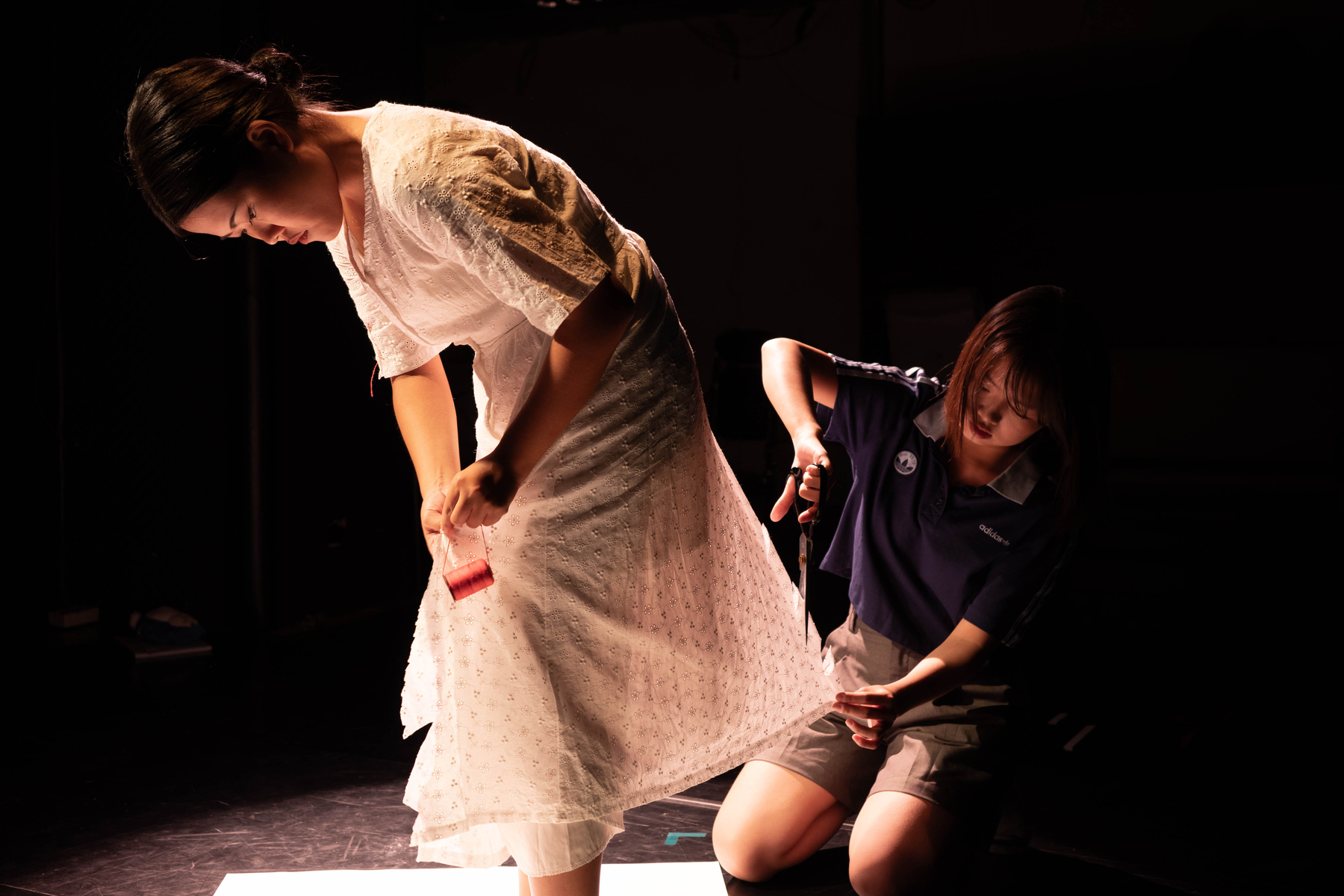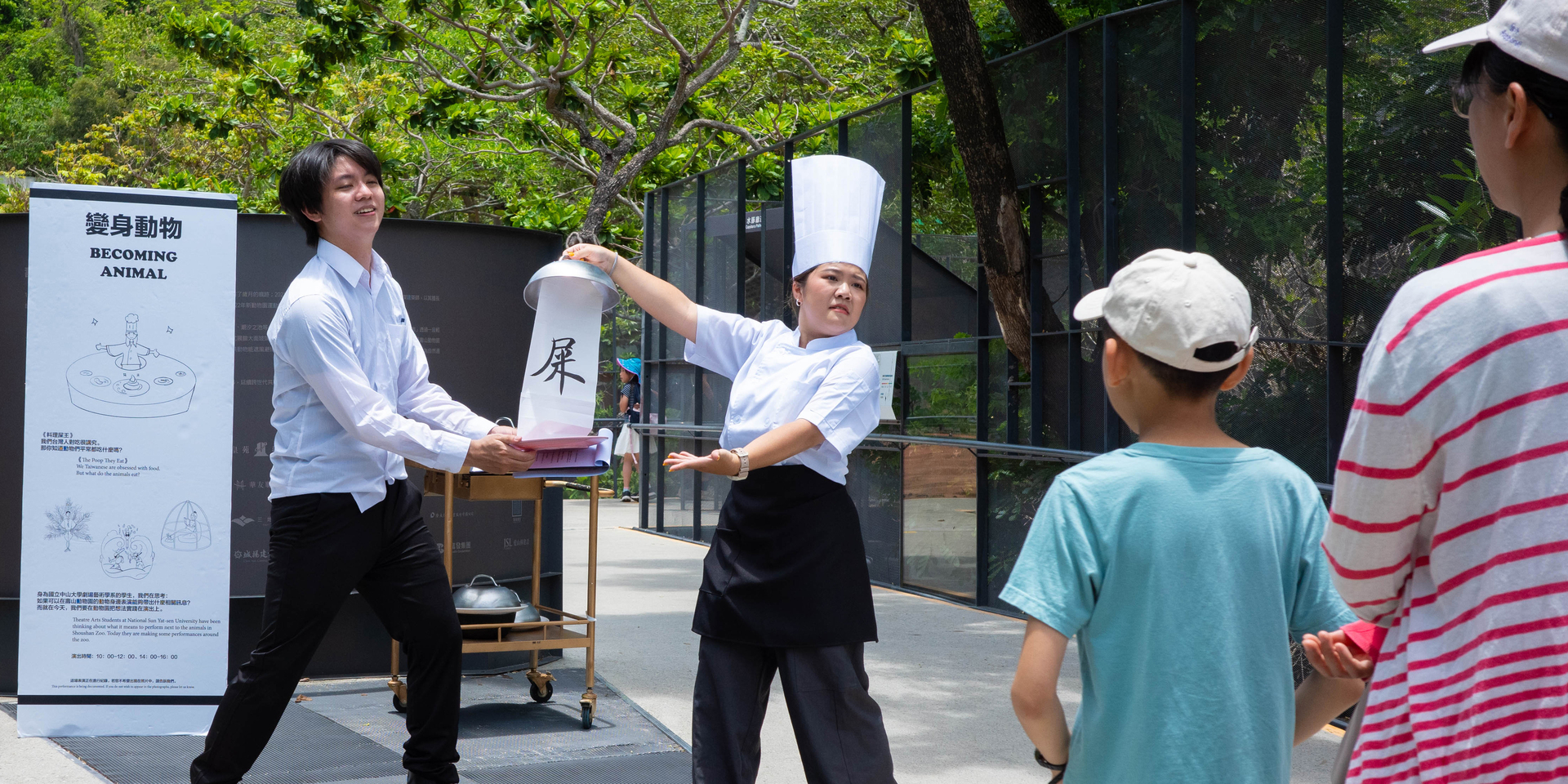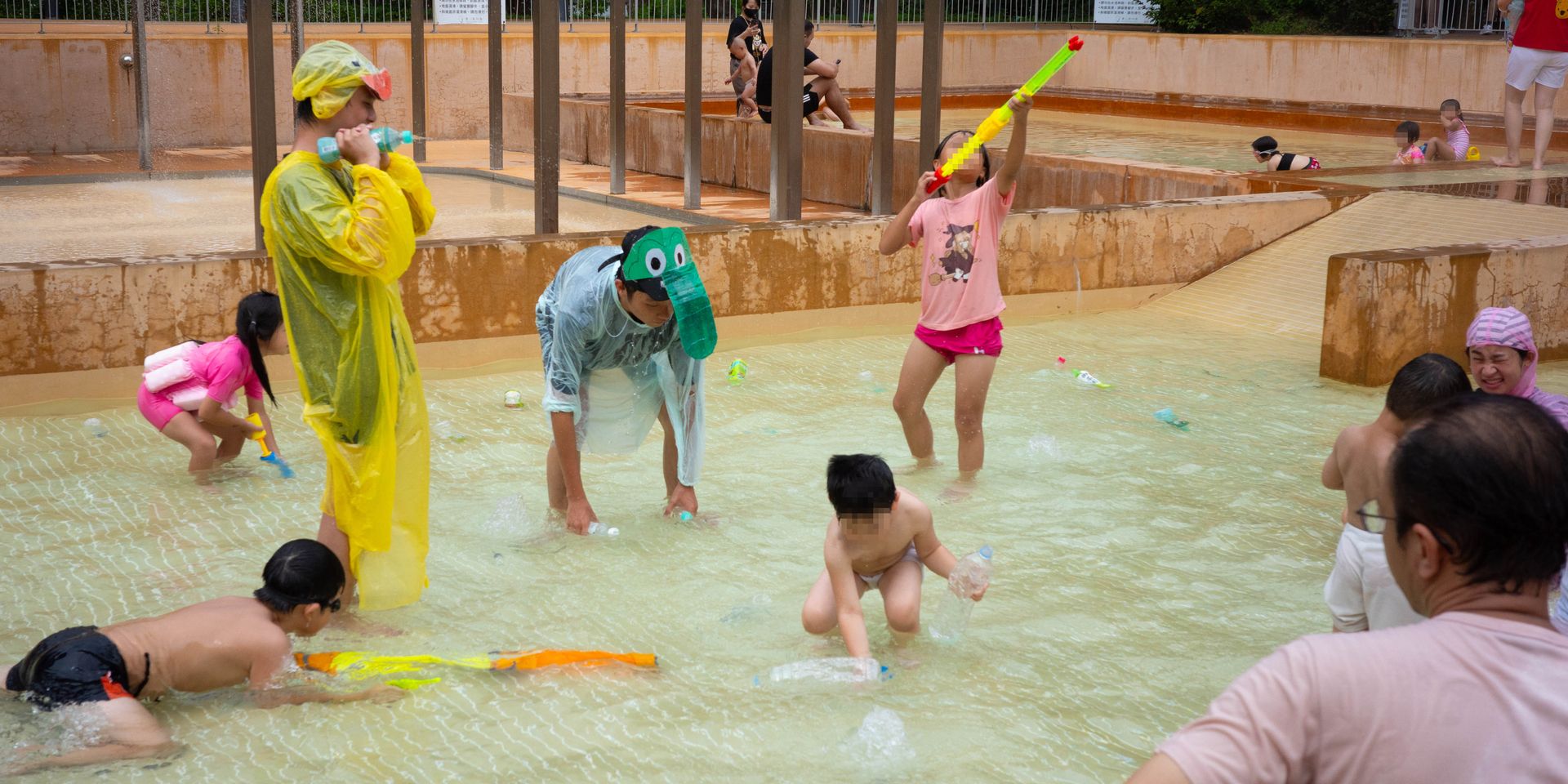Beyond the stage: students explore performance in the zoo and on the edge




2025-07-03
(Provided by Department of Theatre Arts) This semester, two Theatre Arts courses at National Sun Yat-sen University (NSYSU) pushed students beyond the conventions of scripted theatre. Conceived and led by Associate Professor Joshua Sofaer, the courses—(TA394) Performance and Live Art and (TA557) Text and Spatial Narration—encouraged experimentation, ethical engagement, and artistic risk-taking.
In Performance and Live Art, students investigated the blurred boundaries between theatre, visual art, and lived experience. The course combined theoretical context with hands-on creation, introducing students to the history of Performance and Live Art while challenging them to ask: What are my personal boundaries as an artist? What will I do—or refuse to do—in the name of art?
Working under the provocation of Boundaries, students explored the body as material, the use of space and time, audience interaction, and the politics of performance. The semester culminated in a one-night exhibition of durational works spread throughout the Fine Arts building. Installations invited the audience to move, participate, or even complete the work themselves. The performances were diverse—some quiet and introspective, others confrontational or absurd—but all asked the viewer to step outside the comfort zone of traditional spectatorship.
Meanwhile, on the other side of the mountain, at Shoushan Zoo, Text and Spatial Narration took a different approach to performance-making. Subtitled Becoming Animal, the course explored the zoo as a unique site for performative storytelling. Students engaged directly with the zoo's environment and staff to create intergenerational performances for the general public.
In a space dominated by both real animals and real families, students were challenged to develop site-sensitive, ethically aware performances that responded to the complexities of making art in a non-theatrical setting. As one student reflected, "I believe ethical perspectives should be part of the creative process, and I will now pay extra attention to this kind of reflection in my future creations." Collaborating with the zoo team, they devised short interventions that respected animal welfare while engaging visitors in fresh and surprising ways.
Student work included the consideration of what it means to be a human animal amongst non-human animals, our behaviour, and responsibilities. The goal was not simply to entertain, but to deepen awareness of conservation, biodiversity, and the layered politics of the zoo space.
Both courses encouraged students to leave behind assumptions about "acting" or "theatre," and instead develop personal, expressive modes of making that responded to material, site, and audience. Whether working with trash, daring the audience, or inviting curious zoo-goers to interact, students learned to take creative responsibility for their choices—ethically, aesthetically, and practically.
As Sofaer puts it: "Performance is not always about interpreting a script. The performer as artist is someone doing, sensing, and making meaning in real time." These courses demonstrate that performance doesn't always need a stage. Sometimes, it only needs a question, a space, and the courage to act.
(Edited by Public Affairs Division)
